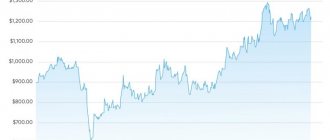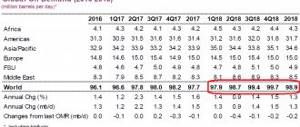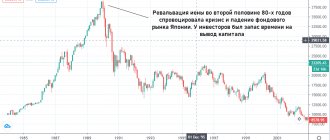List of leading countries in gold mining in the world
Among all minerals, this rock is considered one of the most valuable, which explains its importance for state reserves - with the help of gold, the liquidity of the national currency is determined.
Indonesia
On average, about 110 tons of ore are mined per year. There are more prospects for production, but the country has an active tax amnesty program, which was introduced to attract investment, but in fact hinders gold mining companies within Indonesia.
Ganga
The state is located in northern Africa. Development here began in the 15th century by Europeans. The abundance of mines led to the fact that deep reserves were not used for many years - ore was collected on the surface.
Despite the fact that there are a large number of gold-bearing sources in the Ganges, they are not developed on an industrial scale, but by small private entrepreneurs with primitive mining methods. The gold is crushed along with other rocks and washed away.
However, such methods also yield at least 130 tons per year.
Mexico
The geological stop is extremely favorable. The subsoil of this territory gives residents not only gold, but also other precious metals and stones. Production does not fall below 120 tons, which is considered a very good indicator and allows the country to remain among the leaders in gold mining. This is due to the volcanic soil, rich in resources. Each ore (including lead, silver) is subjected to modern beneficiation technology, which makes production more cost-effective.
Canada
Annual production exceeds 160-170 tons. In 2021, a new gold-bearing source was developed, which gives the country certain prospects. Although the state is among the top ten in production, it is considered to have unfavorable economic policies. Canada's decision to sell its gold reserves caused widespread resonance. This move was explained by two factors:
- Gold does not earn interest.
- Storing large volumes of ore requires too much space.
South Africa
The country in southern Africa was so caught up in the gold rush that in 1970, under the leadership of the British Empire, a record amount of metal was mined here - more than 1,000 tons. But the results for 2021 give a disappointing picture: the results are 18% lower than 2017. The same statistics are provided by experts on other precious metals and rocks.
Peru
Most Peruvians are employed in industries where gold, copper and other resources are mined. This developed area is explained by the ease of extraction - gold particles are found in rivers and lakes on the west coast of South America. Due to the lack of modern technology, the level of gold production is not actually growing, which makes the country less competitive than other leaders.
USA
In the 19th century, one could talk about the undoubted primacy of the country, but gradually it began to lose to South America and Russia. Today, the United States occupies an honorable 4th place among the leaders. 230-240 tons is a stable production level. The government and economic representatives announce a policy of reducing gold mining in connection with maintaining its national currency, the dollar, at the same level. This leads to the closure of a number of mines.
Australia
Half of the state's exports are natural resources, but the gold mining system is not sufficiently funded by the state. Experts suggest Australia's position will worsen over the next 40 years. Already, the country is not increasing its rock production, but is limited to a stable figure of 288-289 tons.
This is explained by the fact that not all mines are state owned. The government gives the right to develop deposits to private individuals. Any person can get a license, even those without citizenship, that is, a tourist.
Russia
In the Russian Federation there are many deposits in 15 federal districts, the leaders among them are the Chukotka District, the Krasnodar Territory and the Amur Region. The country is heading towards increasing gold production, and the government’s interest in this program is understandable, since two-thirds of all raw materials are purchased by state-owned companies.
The breakthrough that raised Russia to the top positions of the ranking was made due to the discovery of new promising deposits in the Magadan region and Kamchatka. The cold climate makes gold mining difficult.
China
China's gold mining policy is multilateral. Various methods are actively used:
- A lot of gold is mined - about 450 tons per year, while the latest technologies are used, old mines are modernized and new ones are built.
- The country takes part in gold mining projects of other countries, including joint projects with Russia.
- On the gold market, representatives of China are buying bullions of the precious metal.
These steps are determined by the desire to strengthen the position of the yuan in the world.
World gold reserves
Unfortunately, gold is a non-renewable natural resource and its reserves are limited. The largest reserves of this precious metal are concentrated in South Africa (19%), USA (13%), Australia (12%), Russia (7%), Indonesia (4%). At the same time, the wealth of reserves does not yet determine the intensity of their development.
If we rely on regional statistics, it shows that today the leading countries in gold production are Asian countries (26%); Africa is only in second place with its 19%, and in third are the Americas, where about 17% of gold is mined. In the structure of the gold processing industry, the volume of production is not always equal to the volume of production - scrap processing is also taken into account.
Since gold began to be mined by washing river sand several thousand years ago in ancient Sumer and Akkad, humanity has mined about 190 thousand tons of gold worth about 10 trillion dollars. Gold reserves accumulated by states account for no more than 1/5 of this volume, while more than half of the mined metal is jewelry.
Which country comes first?
Useful articles
Gold rate for today: online quotes chart + analytics and forecast
Russia's gold and foreign exchange reserves today: is there any cause for concern?
Investments in metals: is it really profitable to invest in gold?
For several years now, the undoubted leader has been China. About 15% of all ore in the world is mined here. This is explained both by politics and the desire to strengthen the currency, and by favorable rock development, new mines. Experts predict the country’s leading position for at least another 15 years.
Leadership of the People's Republic of China
For many years, China has remained the world leader in gold mining and at the same time a top consumer of bullion. In 2021, this country accounted for 14% (464 tons) of total production. In 2017, the figure dropped to 13% (429 tons) due to environmental measures initiated by the government. However, according to preliminary results, production in 2021 may be larger. This is facilitated by new projects involving the modernization of mines.
China may retain its first place for several decades.
In one of the cities of Shandong province, the largest deposit was recently discovered, the useful layer of which reaches 2 km in length and 67 m in thickness. According to preliminary data, it contains almost 400 tons of gold. This reserve is estimated at approximately $20 billion.
China's gold purchasing policy pursues the goal of internationalizing the yuan, which will enable the republic to influence the international monetary system and ensure its own economic security. The problem of gradual depletion of reserves is being solved through the participation of companies from different countries, including Russia, in gold mining projects.
The future of Canada's economy
In recent years, Canada has changed its position in the ranking of gold production by countries of the world. For example, production of 163 tons in 2016 brought it only seventh place, while 171 tons in 2017 allowed it to move to fifth. Progress is likely to continue as a significant deposit has been discovered in northern British Columbia that could allow production to ramp up quickly.
The find will most likely come in handy, since Canada has sold all of its gold reserves. Economists explained these actions for two reasons:
- storing precious metal requires expenses;
- gold does not earn interest.
However, the price of the precious metal is rising, and the sale of its reserves not only did not lead to a reduction in spending, but also led to an increase in government debt, the amount of which has already exceeded a trillion dollars. This reduces Canada's international prestige and makes its financial position very unstable. Any change for the worse in the global economic system could lead to the collapse of the economy of the North American state.
Why are gold and foreign exchange reserves needed and why do countries accumulate them?
The main generally accepted role of gold and foreign exchange reserves is considered to be ensuring the stability of the national currency exchange rate, as well as the stability of the entire financial situation of the state. Gold and foreign currency reserves are an indicator and guarantee that the country will fulfill its obligations.
Gold and foreign exchange reserves are much more important for countries with economies isolated from the outside world. Since such countries rely less on credits and borrowings from other countries and the International Monetary Fund.
Unique mines in South Africa
Until relatively recently, the Republic of South Africa was the largest gold producer, but when the growth rate slowly but surely began to decline, the country began to lose its position. It now ranks sixth or seventh (163 tons in 2021 and 157 tons in 2021).
However, South Africa remains the record holder for the depth of gold mines . Only in this state there is a mine that extends 4 kilometers underground. She is called Tau-Tona. Local gold ore contains uranium, so its extraction is carried out using the method of cyanidation followed by leaching. This technology makes it possible to maintain the overall recovery of precious metal at 90%. In less than 30 years, 36 thousand tons of gold were extracted from this source.
Tau Tona is located in the Witwatersrand field. Next to it there are about four dozen mine fields.
"Prospector Country" Peru
Against the backdrop of countries increasing gold mining volumes, Peru is somewhat losing its position. If in 2021 the production of 166 tons put the state in fifth place in the ranking, then a too small increase of only 1 ton in 2021 reduced its position to sixth.
This is due to repression against illegal mining in the La Pampa region. In addition, the country specializes not only in gold, but also in the development of other mineral deposits, primarily copper.
The Peruvians themselves call their homeland a “prospecting country.” In various provinces, the extraction and processing of mineral resources is the main occupation of local residents. In Mandre de Dios they work with gold. Its smallest particles are found in rivers whose waters wash the slopes of the Andes. By eroding river soil, metal can be mined. It is easily extracted from sand using mercury, which then evaporates when heated.
The resulting gold is sold in shops in the provincial capital, after which larger companies buy it, further refine it and distribute it to the jewelry, technology and investment sectors.
Australia's Generosity
In 2021, production of the precious metal in Australia reached 288 tons. This provided it with second place in the list of countries for gold production. In 2021, the position in the ranking remained the same, but the indicators increased by 1 ton. However, in modern realities, project funding is not at a high enough level, and over the next 40 years Australia will begin to lose ground if it does not double the amount required for exploration activities. This could hit the country's welfare, since about 50% of its exports are minerals.
However, authorities do not appear to be too concerned about the future of gold mining, and licenses for private mining are common in states around the country. To do this, any person legally present in the territory (including tourists) can submit an application. Its review usually takes only a few minutes, and after approval, a license is issued. The following parameters depend on how rich the state is in gold:
- price;
- duration of action (usually 1−2 years or indefinitely);
- mining rules.
Since all the major reserves are concentrated in Western Australia, prices there can be double those in the rest of the territory, where deposits are smaller. The mined gold can be sold to private buyers or delivered to collection points almost at exchange prices.
What are gold and foreign exchange reserves?
Gold and foreign exchange reserves (GRE) are highly liquid assets that are under the control of the state, namely under the control of their financial regulators - usually the Central Bank or the Ministry of Finance. These highly liquid assets include monetary gold, reserve foreign currencies, SDRs and the reserve position of the International Monetary Fund, to which the owner of the country can turn and receive funds upon request.
Gold and foreign exchange reserves, or international reserves as they are also called, are one of the most effective and liquid instruments that the state has to provide the country’s currency. However, it is not the only one; in addition, the Central Bank also has external and internal loans and deposits, securities and fixed assets on its balance sheet to provide the country’s currency.
Gold Coast - Ghana
Eighth place in the ranking is occupied by the North African country of Ghana, nicknamed the Gold Coast by Europeans in the 15th century because the precious metal there almost lay in the sand under their feet. This accessibility meant that metal mining was primitive, and most of the reserves lying slightly deeper remained untouched.
Now in Ghana there are many abandoned fields that are unprofitable to develop industrially, so they are being developed privately. Usually, the rock pieces are simply crushed and then pounded. The resulting crushed mass is washed in small trays until only gold remains.
By these and other methods, 131 tons of gold were mined in Ghana in 2021, and 130 tons in 2021. Its sale accounts for 20 to 50% of the country's export income. Apart from gold, the country has other natural resources such as diamonds, aluminum ore, manganese, petroleum, natural gas and silver.









